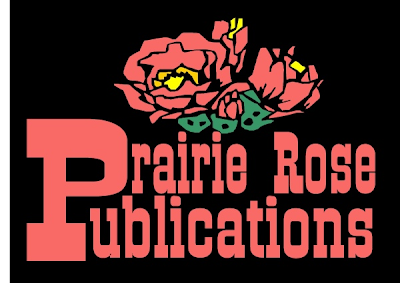Got Goats?
When I think of the Old West, goats are not the first thing that comes to mind. Nevertheless, the story I'm working on now has goats. It's a western historical romance and will be included in Prairie Rose Publications' Lassoing a Groom anthology. I'm not quite sure how I'm going to pull this one off, butt it'll happen. (pardon the pun)
A side note: researchers have now discovered what goat owners knew all along--they're very intelligent animals. See this article at Science Recorder.
A side note: researchers have now discovered what goat owners knew all along--they're very intelligent animals. See this article at Science Recorder.
It all started with a mule named Socrates who took over my second published book, Down Home Ever Lovin' Mule Blues. It's a wonky contemporary western romance, narrated by good ol' Socrates, who has a rather condescending but patient view of humans. Readers loved him, and now have come to expect animal characters in my stories. Animals do have a role in nearly all my books and short stories.
Let's be clear here--I do not put animals in my stories to enhance the characterization of the humans. The animals are characters in their own right. I grew up on a farm and animals were my friends, which is how I see them to this day. Not human, but each has a personality. And they're always just there. You can't have a ranch ten miles from the nearest neighbor that isn't self-sufficient--and that means milk cows, chickens, pigs, dogs, and cats. Each animal has a job. People who live and work there are just as dependent on the animals as the animals are on them.
 |
| Spanish goats |
Which brings us to my current pickle--people kept asking me for a story with goats. I've never had a goat. In fact, I'm not sure a goat has ever set foot where my story is set, Owyhee County, Idaho. I sure didn't see any when I lived there. They have horses, cattle, sheep, dogs, cats, rattlesnakes, porcupines, coyotes, skunks... but no goats. One of the highest insults is to be called a goat roper.
So I know nothing about goats, other than Pat Garrett was killed over a goat dispute, but that was in the 20th century, and in Texas. No help there. Sigh. Thank the giant Bit Bucket there's YouTube and Google. First thing, I wanted to know what breed of goat my heroine would have. I knew about horses, cows, and dogs in the 19th century, but not a thing about goat breeds.
After several hours of searching, I found out that the goats in North America came from Spain with the Spaniards (no surprise) in the 17th century. They were called goats. I guess sometimes we have to keep it simple. Sometimes they were called Spanish goats. In the eastern US, they were sometimes called by the location, such as Corn Patch Holler goats, but the DNA was the same as those original goats brought here by the Spaniards. (Side note: that breed no longer exists in Spain.) Not until the 20th century did goat owners start defining specific breeds and importing from Asia and Africa. (Now Spanish goats are a vanishing variety because of all the crossbreeding.)
So goats were goats. Females were called nannies and males were called billies. That changed in the latter half of the 20th century and now females are called does and males are called bucks. I'm not sure what was wrong with nannies and billies, but there you have it. Offspring were called kids, as they are still. I figured it would be more politically correct to call them fawns. Castrated males are called wethers.
Goats can live just about anywhere and love rugged terrain. They're browsers, not grazers, so they can thrive on vegetation that cattle can't even eat. They give more milk for their body weight than a cow and cost far less to maintain. Plus, they kid a couple times a year, and often have two kids. A cow has one calf per year and that's it. The only domesticated animal that goes feral more quickly than a goat is a cat, so that shows the hardiness of goats.
As you can see from the video, they come in every color from nearly white to black, with lots of different marking patterns. They're primarily used for meat, but are decent dairy goats as well, and goat hair can be used for weaving. They have horns (looks like they dehorned the goats in this video), and yes, they do butt, some more than others.
A lot of the survivalist sites recommend goats and that got my attention. Owyhee County is high mountain desert and there's not a whole lot of foliage or flat land. Pronghorns do well, so why wouldn't goats? If a man who was an obsessive analyzer and planner wanted to take his family to such a place, it doesn't seem at all unreasonable that he'd consider goats, especially if he were the type of man who didn't give a rat's patootie about what others thought.
I've written stories that had dogs, cats, chickens, pigs, mules, cows, horses, and even a skunk. I guess it's time to give goats a try. Be waiting for Lassoing a Groom, a PRP anthology, in May.


















WWtighman.jpg)
WWmadsenC.jpg)
WWthomasH.jpg)














.jpg)